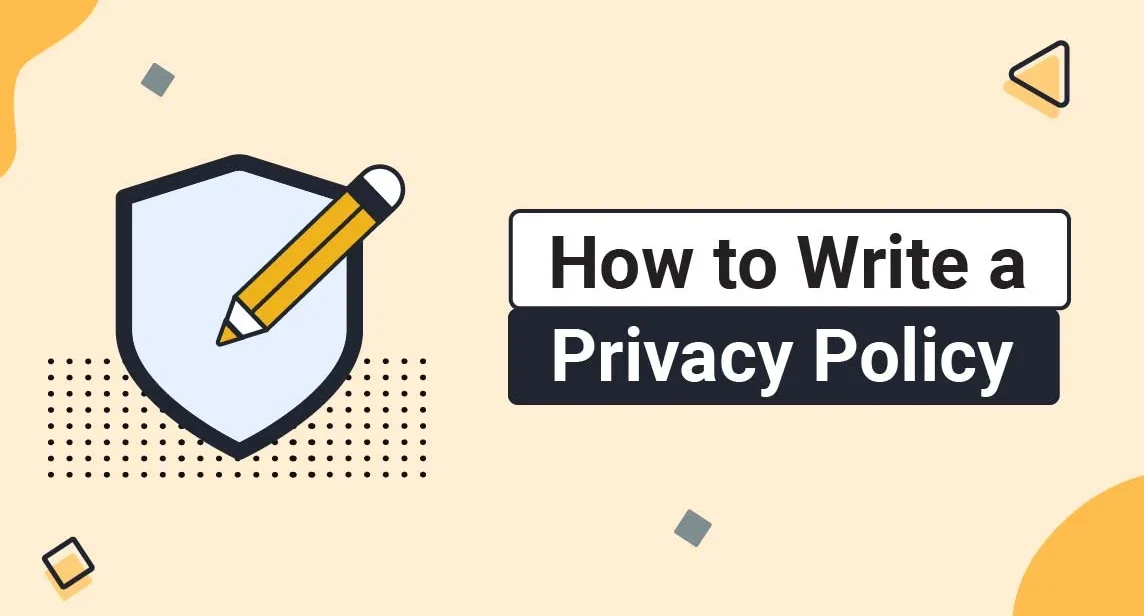A privacy policy is a critical document that outlines how a company or website collects, uses, stores, and protects users’ personal information. Writing a clear and comprehensive privacy policy ensures transparency and builds trust with your users. Here’s a step-by-step guide on how to write an effective privacy policy:
1. Understand the Legal Requirements
Different countries have various regulations regarding data privacy. Familiarize yourself with the laws relevant to your business, such as the General Data Protection Regulation (GDPR) in the European Union, the California Consumer Privacy Act (CCPA) in the United States, and others. Compliance with these regulations is essential.
2. Clearly State the Purpose
Begin your privacy policy by explaining why you are collecting personal information. Be transparent about the reasons and how it benefits the user. This section helps users understand the importance of their data and builds trust.
3. Describe the Information You Collect
Detail the types of information you collect. This can include:
- Personal Identification Information: Name, email address, phone number, etc.
- Financial Information: Credit card details, billing address, etc.
- Technical Data: IP address, browser type, operating system, etc.
- Usage Data: Pages visited, time spent on the site, click patterns, etc.
4. Explain How Information is Collected
Inform users about the methods you use to collect their information. This can be through:
- Direct Interactions: Forms filled out by the user, account creation, etc.
- Automated Technologies: Cookies, server logs, web beacons, etc.
- Third Parties: Advertising networks, analytics providers, etc.
5. Outline How Information is Used
Clearly state how you use the collected information. Common uses include:
- To provide and improve services
- To personalize user experience
- For marketing and promotional purposes
- To comply with legal obligations
6. Discuss Information Sharing
Specify if and when you share user information with third parties. Include details about:
- Service Providers: Companies that help you run your business
- Business Transfers: In case of a merger, acquisition, or sale of assets
- Legal Requirements: When required by law to disclose information
7. Explain Data Storage and Security
Describe how you store and protect user data. Highlight the security measures in place to prevent unauthorized access, such as encryption, firewalls, and secure servers.
8. Detail User Rights
Inform users about their rights regarding their personal data. This can include:
- Access to their data
- Correction of inaccurate information
- Deletion of their data
- Restriction of processing
- Data portability
9. Provide Contact Information
Include contact details for users to reach out if they have questions or concerns about your privacy policy. This can be an email address, phone number, or a contact form on your website.
10. Update Your Policy Regularly
State that you may update your privacy policy from time to time and how users will be informed of these changes. Encourage users to review the policy periodically.
Cum sa vizionezi filme xxx pe smarat tv, dar si filme porno romanesti https://futai.live/femeile-cu-fundul-mare-nu-dezamagesc-niciodata-barbatii-orice-ar-face-ele/https://futai.live/mama-si-fiica-la-sexolog-pentru-sex-in-trei/https://futai.live/ii-baga-jucari-in-cur-ca-nu-ii-ajugea-ce-avea-el-in-chiloti/https://futai.live/sloboz-in-pizda-la-fata-cuminte/https://futai.live/ii-da-muie-blondei-in-dormitor-apoi-o-fute-si-isi-da-drumu-pe-spatele-ei/https://futai.live/urmeaza-sa-vezi-cel-mai-bun-sex-de-calitate-dupa-internet-cu-o-frumoasa-femeie-eleganta/








